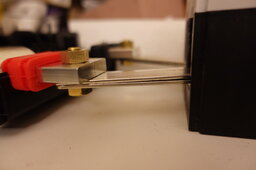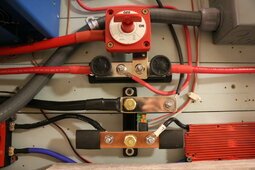kolek
Inventor of the Electron
- Joined
- Sep 29, 2021
- Messages
- 430
Hi guys, it's kolek again, the village idiot with zero DIY skills and no qualifications to be doing electrical anything.
Is it ok to use busbars instead of wire like I'm doing below to make connections? Like below connecting the busbar to the 200A breaker?


If you guys approve this, all exposed areas will be covered with shrinkwrap insulation.
I calculated that the cross-section of 2 busbars exceeds the cross-section of the wire I'm using here, so I thought it might be ok.
Using M8 brass nut & bolt for the connection.
The gap between the busbars you're seeing in pic 2 won't be there after I bolt these down to the breaker.
These are solid copper busbars, I have verified that.
No good?
Is it ok to use busbars instead of wire like I'm doing below to make connections? Like below connecting the busbar to the 200A breaker?


If you guys approve this, all exposed areas will be covered with shrinkwrap insulation.
I calculated that the cross-section of 2 busbars exceeds the cross-section of the wire I'm using here, so I thought it might be ok.
Using M8 brass nut & bolt for the connection.
The gap between the busbars you're seeing in pic 2 won't be there after I bolt these down to the breaker.
These are solid copper busbars, I have verified that.
No good?
Last edited:



